- News
- Reviews
- Bikes
- Components
- Bar tape & grips
- Bottom brackets
- Brake & gear cables
- Brake & STI levers
- Brake pads & spares
- Brakes
- Cassettes & freewheels
- Chains
- Chainsets & chainrings
- Derailleurs - front
- Derailleurs - rear
- Forks
- Gear levers & shifters
- Groupsets
- Handlebars & extensions
- Headsets
- Hubs
- Inner tubes
- Pedals
- Quick releases & skewers
- Saddles
- Seatposts
- Stems
- Wheels
- Tyres
- Tubeless valves
- Accessories
- Accessories - misc
- Computer mounts
- Bags
- Bar ends
- Bike bags & cases
- Bottle cages
- Bottles
- Cameras
- Car racks
- Child seats
- Computers
- Glasses
- GPS units
- Helmets
- Lights - front
- Lights - rear
- Lights - sets
- Locks
- Mirrors
- Mudguards
- Racks
- Pumps & CO2 inflators
- Puncture kits
- Reflectives
- Smart watches
- Stands and racks
- Trailers
- Clothing
- Health, fitness and nutrition
- Tools and workshop
- Miscellaneous
- Buyers Guides
- Features
- Forum
- Recommends
- Podcast
review
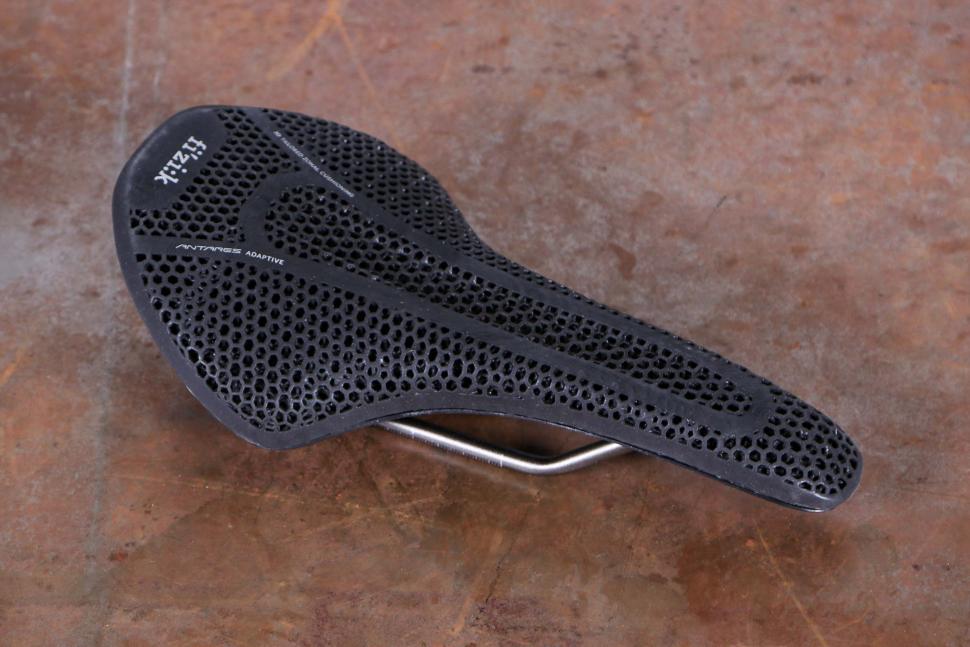 2024 Fizik Vento Antares R3.jpg
2024 Fizik Vento Antares R3.jpg£259.99
VERDICT:
Cool-looking 3D construction, with zoned cushioning, but the very soft centre won't suit all riders
Zoned cushioning works well for sprints and uphills
Saddle flex with pedal strokes
Looks cool
Zoned cushioning too soft in the middle (for some)
Overly grippy in cornering
Finishing issue with the 3D print on test saddle
Weight:
228g
Contact:
At road.cc every product is thoroughly tested for as long as it takes to get a proper insight into how well it works. Our reviewers are experienced cyclists that we trust to be objective. While we strive to ensure that opinions expressed are backed up by facts, reviews are by their nature an informed opinion, not a definitive verdict. We don't intentionally try to break anything (except locks) but we do try to look for weak points in any design. The overall score is not just an average of the other scores: it reflects both a product's function and value – with value determined by how a product compares with items of similar spec, quality, and price.
What the road.cc scores meanGood scores are more common than bad, because fortunately good products are more common than bad.
- Exceptional
- Excellent
- Very Good
- Good
- Quite good
- Average
- Not so good
- Poor
- Bad
- Appalling
The Fizik Vento Antares Adaptive R3 saddle is designed with a low profile, a long nose, very flexible wings, and zoned 3D printed padding. I found it comfortable for short to medium distances, and good for putting the power down, but I didn't get on so well with the more flexible central area on long rides, though I am quite a heavy rider.
As with any saddle review, when it comes to comfort it's entirely subjective – what I find comfortable might, to you, feel like sitting on a bed of nails, or what is uncomfortable for me might make you feel like you're floating on a cushion of air. With that caveat, check out more options in our guide to the best bike saddles.
I already own several traditionally constructed Fizik Antares saddles, and have always got on really well with them, but the Vento Antares Adaptive R3 is the first 3D printed saddle I've tried. I was looking forward to seeing how it might improve further on comfort with a more modern manufacturing technique. I tested the 140mm version, but a 150mm version is also available, which weighs another 5g.
Construction
First off, it definitely has a cool factor – the saddle received many compliments from fellow riders at the cafe stop.
The 3D print is laid down onto a carbon-reinforced nylon shell, and the rails are a lightweight but flexible alloy that Fizik calls Kium. Fizik says these Kium rails damp vibration and I've found that to be the case. Carbon-railed saddles tend to give a stiffer, less forgiving feel. There is an R1 version available with carbon rails for another £40 if you want stiffer, lighter and blingier.
The 3D printed lattice construction creates hundreds of hexagonal honeycomb-cell shapes, which vary in thickness across the top of the saddle. Fizik calls this zonal cushioning, meaning that different parts of the saddle vary in softness and flexibility.
On the nose of the saddle, the borders of the hexagons are very thick, and it is very firm here; the front is the firmest part of the saddle.
Moving back towards the middle of the saddle, the hexagons are much more spaced out, with thin edges, and it becomes very soft in the centre. There is also a cutout in the base, and loads of give in this central section.
At the sides, the saddle becomes firmer again, but the shell of the base allows the sides to flex. It has the most flexible wings on a Fizik Antares I've experienced, conforming to my pedal strokes and thigh movements.
At the rear of the saddle it becomes firmer again, but still with a good amount of give, ideal for pushing off when climbing.
Where the 3D print has been built up from the base of the saddle, the 3D printed 'layering' is evident, and there's also a gap of a few millimetres between the base and the 3D print. This is different to non-3D printed saddles, which tend to curve and tuck in around the edges of the base. I was initially concerned about chafing, but it was fine against my bib shorts.
There was, however, a pronounced nobble on the side of the saddle, which I assume must be from where the 3D print machine finishes the build-up of the lattice layers. I could feel this in summer shorts, and really it's something that should have been removed in quality control checks.
My older Fizik saddles have cutouts for Fizik's Integrated Clip System (ICS), which allowed ICS saddle bags to be slotted in and swapped between compatible saddles, but the Antares doesn't. Something to bear in mind if you were hoping to use one.
Performance
I initially got on well with the Fizik. I used it for daily commutes on the Bath-Bristol shared-use path, and found it comfortable for short to medium distances up to about 60km.
It's good for putting the power down too – its firm front nose meant I could still ride 'on the rivet', just perching on the edge when sprinting and really going for it.
I also took the Antares with me to France, so tried it on longer rides over 60km. On climbs I found the rear of the saddle comfortable for pushing up hill; it has just the right amount of firmness here. However, I didn't get on so well with the more flexible central area with the cutout channel. For me it just has too much give, giving me the feeling of being 'sunk down' in the middle, behind the much firmer front, and I suffered from numbness in the perineal area. I am quite a heavy rider at 90kg, so put a fair bit of downward pressure on the saddle, and could have done with it being a little less soft in this area. Everyone is different, though, and lighter riders might not have a problem.
One other slight issue is that the 3D print texture doesn't make for easy sliding with bib shorts material – if I was trying to adjust my position on a twisty descent, I needed to rise off the Fizik and plop my bum back down again rather than slide. It's a bit too grippy.
Durability
It does seem to be lasting very well. I've stuck 1,000 miles onto the Vento and the white logos on the top are still completely intact, as are the honeycomb hexagons.
I've also swapped the saddle between gravel and road bikes, which has meant adjusting its position along the Kium rails, and there are no marks on them.
Weight
At 233g on the road.cc Scales of Truth, the Vento Antares is a similar weight to other 3D printed saddles running alloy rails. If you want lighter, the carbon-railed R1 is a claimed 180g in the same 140mm size.
Value
Although the Fizik is undoubtedly pricey, it's pretty good compared with other 3D printed saddles.
Stu, for example, tested the 3D printed Specialized Pro with Mirror in 2022, which has dropped in price since but is still £275; it has titanium rails, and weighs a little more than the Fizik at 254g. Stu found it comfy, although it took him a fair while to get used to it.
If money is no object and weight is a consideration, fellow Italian saddle maker Selle Italia scored well with its elaborately named SLR Boost 3D Kit Carbonio Superflow. Stu found it exceptionally comfortable. It features carbon rails, and weighs just 177g, and will also lighten your wallet to the tune of £409.99.
If you're after a short-nosed saddle, Fizik also does a 3D printed Vento Argo, with identical technology, for the same price.
Conclusion
To sum up, the Vento Antares Adaptive R3 impresses with its modern 3D construction, seems durable, and the flexible sides stop chafing, but it's tricky to adjust your position mid-corner because of the high grip, and the very soft centre might not suit all riders for big distances.
Verdict
Cool-looking 3D construction, with zoned cushioning, but the very soft centre won't suit all riders
road.cc test report
Make and model: Fizik Vento Antares Adaptive R3
Size tested: 140mm
Tell us what the product is for and who it's aimed at. What do the manufacturers say about it? How does that compare to your own feelings about it?
Fizik says: "A versatile saddle designed with a low-profile, tapered nose-to-wing transition, and zoned 3D-printed padding to provide comfort in every riding position.
"Delivering performance and comfort, from road to CX and XC, the Antares R3 balances strength and weight savings with a carbon-reinforced nylon shell and Kium hollow rail combo."
Tell us some more about the technical aspects of the product?
Fizik lists these details:
- Low Profile, tapered nose to wing transition
- Adaptive 3D-printed padding
- Carbon-reinforced nylon shell
- Kium hollow rails
ANTARES ADAPTIVE R3 140 mm
Length: 268 mm
Width: 140 mm
Height at 75 mm width: 50 mm
Length from nose to 75mm width: 147 mm
Weight: 220 grams
Rail: 7x7 mm
Also available in 150mm width - all other measurements are identical, apart from it weighs 5 grams more than the 140mm version.
Rate the product for quality of construction:
8/10
The 3D printed lattice construction creates hundreds of small honeycomb shapes, which vary in thickness across the top of the saddle. Fizik calls this "Zonal cushioning", meaning that different parts of the saddle vary in softness and flexibility.
On the nose of the saddle, the borders of the hexagons are thicker, and it is very firm here; the front is the firmest part of the saddle.
As you get to the middle of the saddle, the hexagons become much more spaced out, with thinner edges, and it becomes very soft in the centre, and there is also a cutout in the base, further enabling it to be very flexible in the centre.
At the sides, the saddle becomes firmer again, but the sides are quite pliable. It has the most flexible "wings" on a Fizik Antares I've experienced and it conforms to my pedal strokes and thigh movements. At the rear of the saddle, it becomes firmer again, but still with a good amount of give or "squidge" – ideal for pushing off when climbing.
Where the 3D print has been built up from the base of the saddle, the 3D printed "layering" is evident, and also a gap of a few millimetres between the base and the 3D print. This is different to non-3D printed saddles, which tend to curve around the edges of the base. I was initially concerned about chafing, but it was fine against my bib shorts.
There was, however, a left-over "nobble" on the side of the saddle which I assume must be from where the 3D print machine finishes the build up of the lattice layers. I could feel this in summer shorts, and think this should have been removed in post-manufacture quality control checks.
The rails on this version are what Fizik calls Kium, which is a light alloy. Fizik says these are vibration damping and I've found that to be the case. Carbon-railed saddles tend to give a stiffer feel. Fizik does an R1 version with carbon rails for another £40 if you want stiffer, lighter and blingier.
Another thing to bear in mind if you've used older Fizik saddles is that it does not have the ICS, Integrated Clip System, for luggage carrying.
Rate the product for performance:
7/10
I initially tried it out on commutes and weekend rides, and found it comfortable up to about 60km, though a little bit too grippy – I was unable to slide to adjust my position as well as on other saddles, you have to rise off the Fizik and place yourself back down again. This wasn't great if I wanted to make a seating adjustment when banking round a corner.
I also took it with me to France and tried it out on longer, much hotter rides with my lightest, thinnest bib shorts on, and could feel the 3D printed surface through them, including the nobble on the side. I found that on rides going over 60km, I would end up sat on the very softest parts of the saddle in the centre, but this would be right behind the much harder nose of the front, which would cause numbness on my perineum area.
I found it good for putting power down, with that firm front nose meaning I could still ride "on the rivet", just perching on the edge when sprinting and really going for it.
Rate the product for durability:
9/10
I've stuck 1,000 miles into the Fizik Vento and it's wearing very well: the white logos on the top are still completely intact, no wear at all, and though I've swapped it between bikes there are no marks on the Kium rails.
Rate the product for weight (if applicable)
7/10
The Fizik Vento is a similar weight to other 3D printed saddles with alloy rails.
Rate the product for comfort (if applicable)
6/10
I initially got on well with the Fizik, and was using it for daily commutes on the Bath-Bristol shared-use path, and found it comfortable for shorter distances. The Wing-Flex, where the sides can bend inwards, is the most flexible I've known on any saddle, and I had no chafe with leg movement at all.
I took the Antares with me to France as well, so tried it on longer rides and some extended climbs, where I found the rear zoned cushioning of the saddle comfortable for pushing uphill. It has just the right amount of firmness there.
The bit I didn't get on with so well was the more flexible central area, with the cutout channel, where the 3D print shows visibly less material. For me it had just a bit too much give, which gave me the feeling of being 'sunk' in it just a bit too much. I'm quite a heavy rider at 90 kilos, so would be putting a fair bit of downwards pressure on the saddle, and could have done with it being a little less squishy in the middle.
The 3D print had a raised 'nobble' on it which I could feel through summer shorts, which was a tad uncomfortable.
Rate the product for value:
6/10
It's pretty good compared with other 3D printed saddles.
Tell us how the product performed overall when used for its designed purpose
I found it good for shorter distances, but started to feel 'sunk in' on longer distances, and experienced some numbness.
Tell us what you particularly liked about the product
Looks cool.
The zoned cushioning and flexible wings are comfortable for shorter distances, and you can still get 'on the rivet' and perch right on the very front edge of the saddle when deep in the drops for sprinting.
Tell us what you particularly disliked about the product
Too much give for me in the central cutout area.
I could feel the 3D printed surface through summer bib shorts, and it sticks to shorts a bit too much, so you can't always slide into the correct position, like when adjusting your position coming into a bend.
Also, it doesn't have the Fizik ICS slot for adding ICS saddle bags, like my older Fizik saddles.
How does the price compare to that of similar products in the market, including ones recently tested on road.cc?
With its Kium alloy rails it's cheaper than other 3D printed saddles we've reviewed – the Specialized Pro with Mirror, for example, is £275, but has titanium rails (and weighs more), while the carbon-railed SLR boost 3D Kit Carbonio Superflow is £410.
Did you enjoy using the product? For shorter distances, yes.
Would you consider buying the product? Probably not.
Would you recommend the product to a friend? I'd recommend they try it.
Use this box to explain your overall score
Overall: it's quite good. It impresses with its modern 3D printed construction and zoned cushioning, it's durable, and the flexible sides prevent chafing. However, it's tricky to adjust your position mid-cornering due to the high grip, and the very soft centre won't suit all riders for big distances.
About the tester
Age: 43
I usually ride: GT Grade My best bike is: Boardman ASR 8.9
I've been riding for: Over 20 years I ride: Most days I would class myself as: Experienced
I regularly do the following types of riding: commuting, club rides, sportives, general fitness riding, mtb, Zwifting
Latest Comments
- andystow 3 hours 14 min ago
Local to me: 3 injured after multi-vehicle crash in Downtown Peoria....
- Destroyer666 7 hours 57 min ago
Anodizing the aluminium is also for corrosion resistance and therefore enhances the longevity of the rims while this is not really a case for...
- bobbinogs 9 hours 11 min ago
Wheelsmith has always been very good for me. Malcolm was always very opinionated so I got bored with him telling me I should be riding tubeless,...
- Terry Hutt 9 hours 30 min ago
I assume you can carry an e-bike battery on the tube if you leave the bike at home. ...
- chrisonabike 10 hours 32 min ago
I love it - it's a roundabout with a sculpture of a roundabout on its desk!
- cmedred 10 hours 33 min ago
From the position of the cyclist when the video starts and the position of the bike later, it looks highly unlikely that the cyclist went "into the...
- Rendel Harris 10 hours 39 min ago
To rhyme with design. I wondered this myself so looked it up a while ago, according to the founder Micki Kozuschek he and his team had a few...
- Rendel Harris 11 hours 33 min ago
It's not being pedantic at all, careless driving is successfully prosecuted (and I have been in court more than once when a driver has been...
- HLaB 11 hours 56 min ago
It's hopefully an urban myth but I heard it was designed that way on purpose, so the cyclepath captured any flooding and the busway would remain clear
- mdavidford 11 hours 59 min ago
I should imagine eating chopsticks anywhere could be potentially rather perilous.
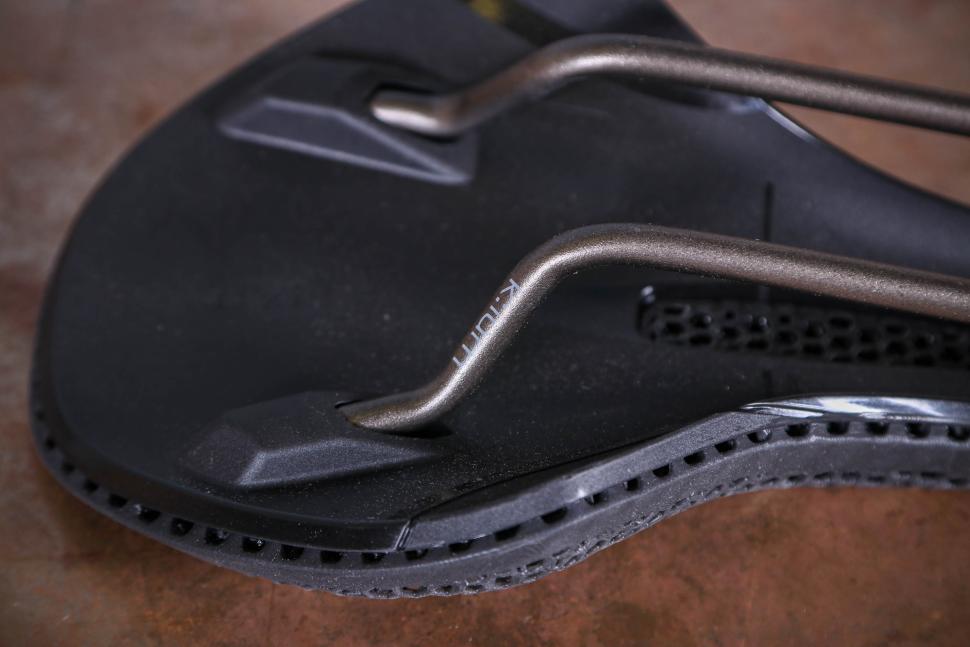













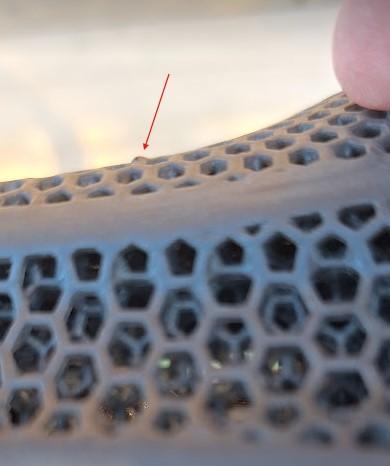
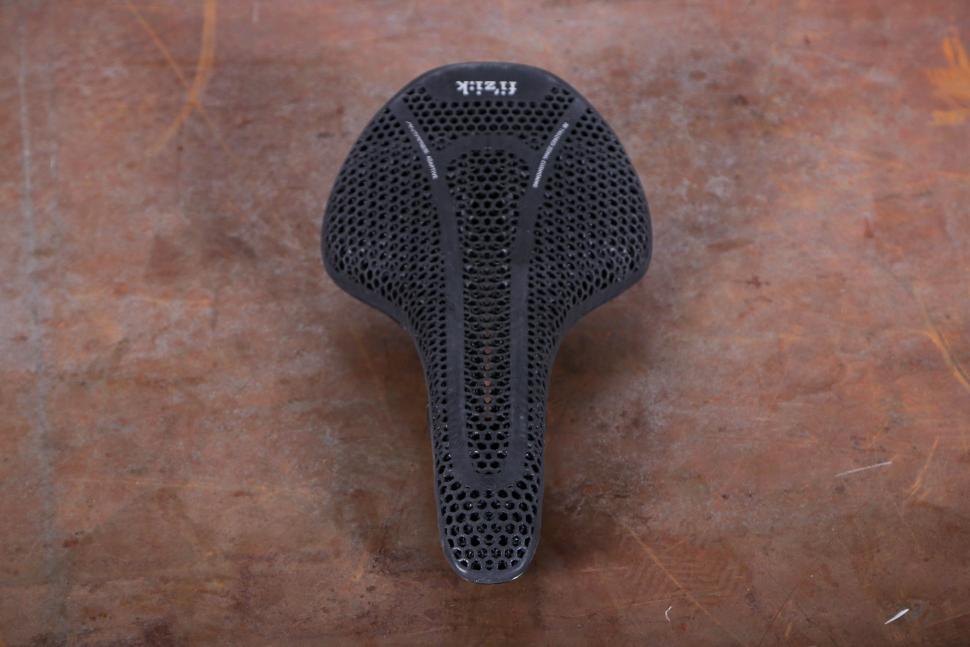
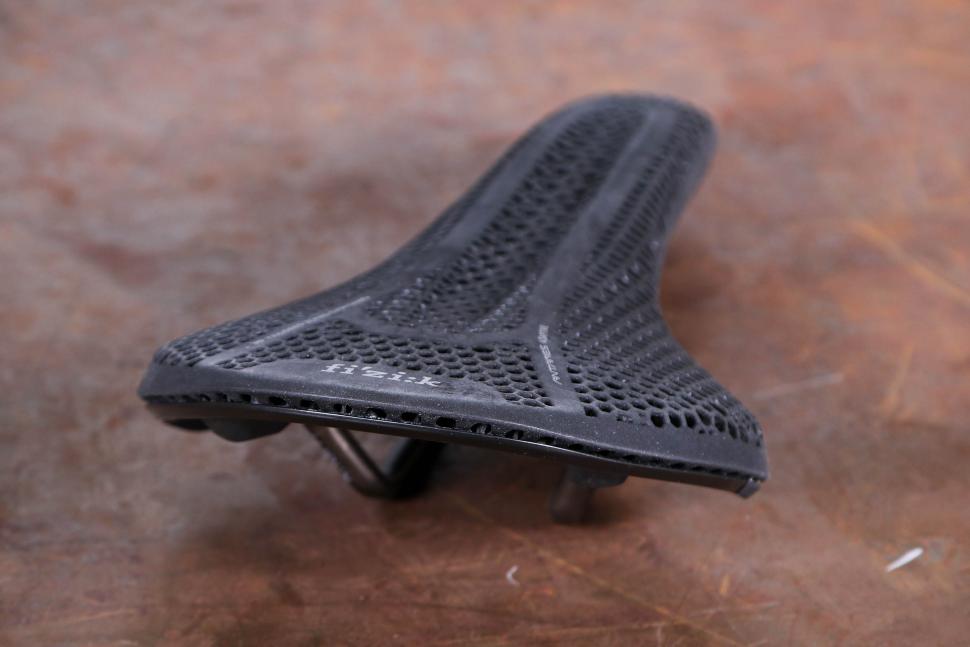
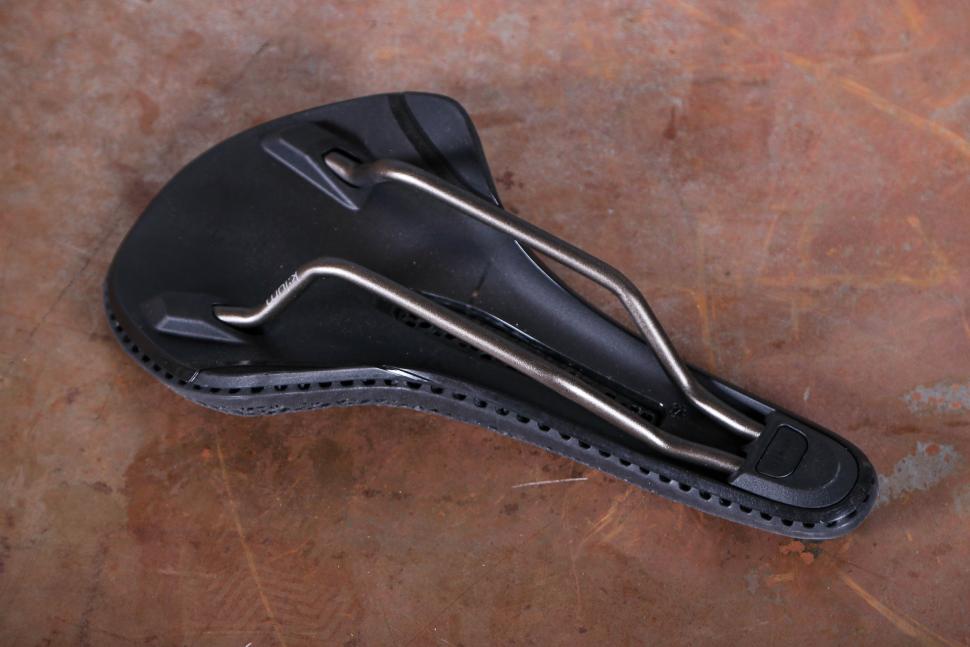
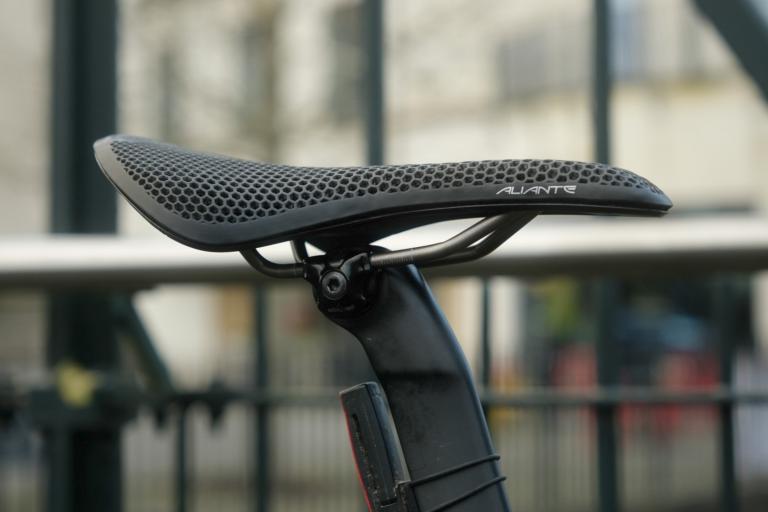


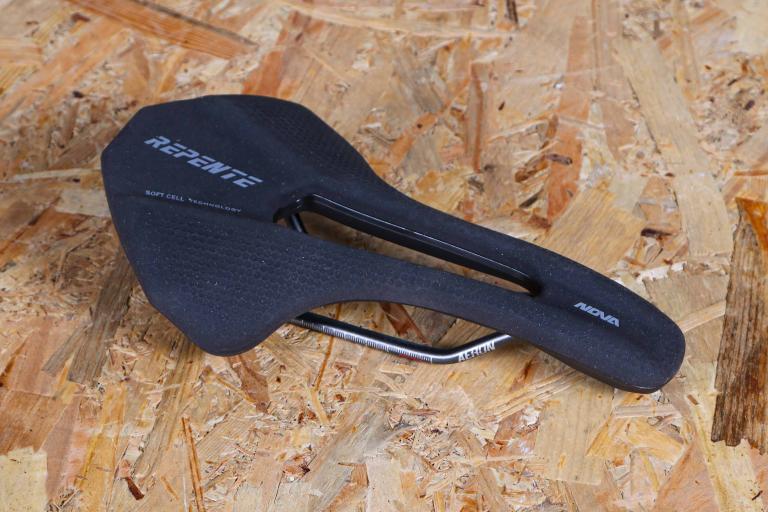
Add new comment
5 comments
This grippiness may be a positive feature for some- I think it was Tony Martin who rode some race/ time trial with a saddle covered with some sandpaper-like material and suffered an anticipated red-raw perineum. This saddle has to be a better idea!
I swear I can remember that when 3-D printing first became a thing we were told it was going to mean a much wider, more customisable range of products would be available at much lower prices. At least in the cycling world it seems instead to have become shorthand for "Think of the amount any sane person with a fair to middling income would be prepared to pay for such a product and then treble it."
3-D printing is a great technique for producing a one-off complex shape, much cheaper than having to create a mould to make it. It is not a technology that is suited to mass production, and the economies of scale don't really apply as the process of "printing" the part cannot be speeded up significantly.
I think a lot of the hype about it a few years ago was around the fact that we would all have our own 3-D printer at home and if we wanted something we could just download a pattern and make it ourselves. This obviously ignores the fact that we don't all want everything to be badly made out of cheap plastic, and even if we do, it is still cheaper to buy plastic stuff made by someone else than to invest in your own means of making it.
Those Lore One/Two shoes look like a good application of the technology. It's just a shame they're so ugly and expensive. And of course there is always the question of whether they actually fit.
It doesn't help for all those 3d printed saddles from western brands they all use that one company called "carbon" for the 3d printed part which presumably have some monopoly on the concept through patents. So it could be "carbon" is charging out the arse for them and specialized, fizik etc have no choice but to charge £250+ for them if they want a 3d printed saddle in their lineup.